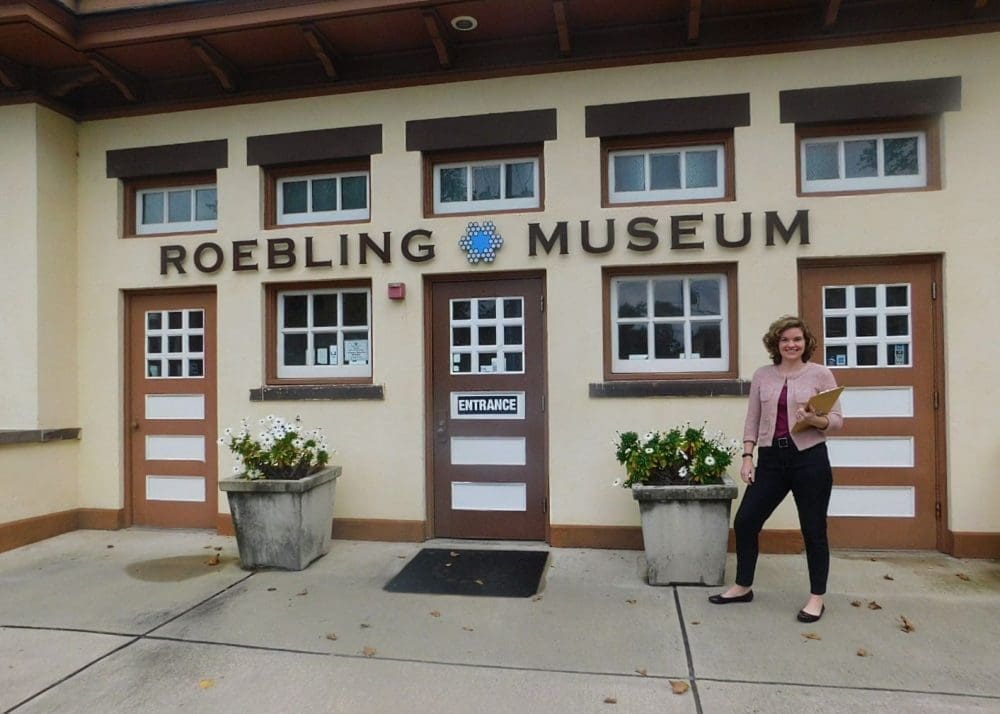The town of Roebling, New Jersey is located within Florence Township in Burlington County. It sits along the banks of the Delaware River about 70 miles from New York City and 27 miles from Philadelphia. Nearby towns had been flourishing for years; towns like Bordentown, Mt. Holly and Trenton. The current population of this quiet river town is about 4,100. Charles Roebling spent $4 million to build the steel mill, wire rope plant and town of Roebling to house their workers in the early 1900’s.
Superfund Success Story
Roebling Museum may be the only museum that can credit its existence to the EPA cleaning of a Superfund site. In 1983, the EPA added this 200-acre property along the Delaware River containing 70 buildings for clean-up and remediation. From 1985-2003, the EPA aggressively cleaned not only the land portions of the former mill, but the silt and sediment in the Delaware River as well. When you gaze out at the river now, it’s hard to imagine the land here covered with structures—teeming with the 8,000 workers who once inhabited the buildings of John A. Roebling and Sons Co. Steel Mill. Where we now can see the flywheel, slag pot, railroad crane and craneway—once stood New Jersey Wire Cloth Company, a copper wire mill, boiler houses, machine shops and steel mills.
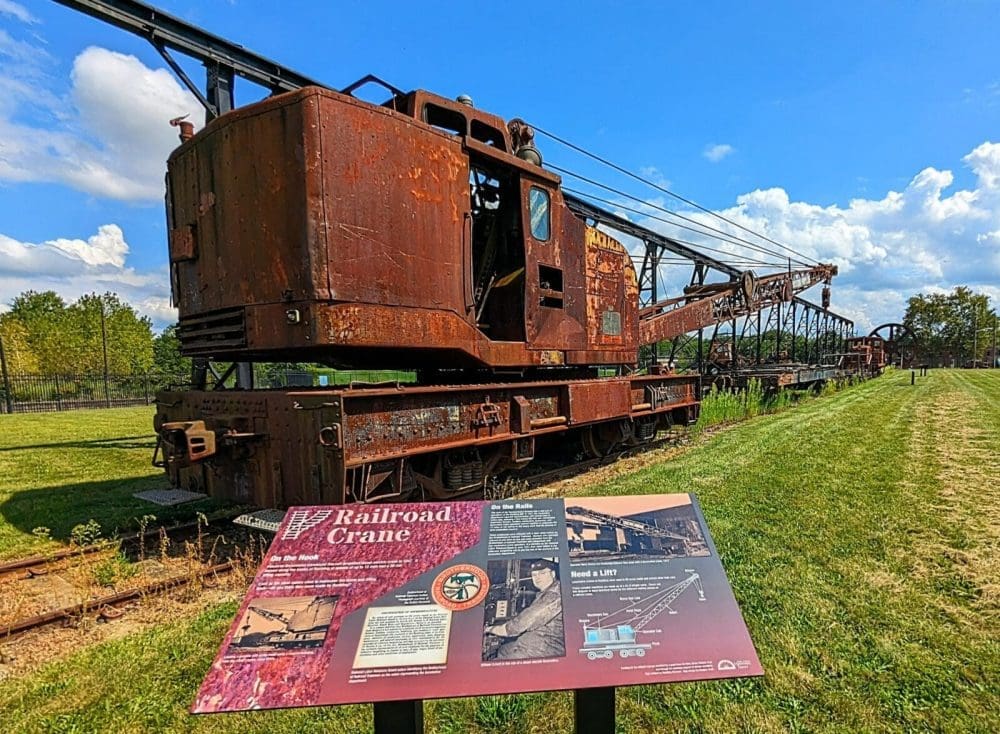
Roebling Roots
Roebling Museum opened in 2010. You can’t live in New Jersey for too long without hearing the name “Roebling,” even if the only association that comes to mind is; “isn’t he that bridge guy?” Roebling Museum exists today because Roebling built not just a steel mill—he built a town for the immigrant workers who would come to work in his factory. By 1910, the town of Roebling comprised 76 acres and 94 buildings which included homes, a general store, a pharmacy and other structures necessary for maintaining a neighborhood lifestyle.
A Museum is Born
The mill may have closed in 1974, but the neighborhood continued to house residents and many former mill workers remained in their homes when the factories left. Now, many homes are inhabited by a third generation and new families are moving in every day. In 1978, the town of Roebling was placed on the National Register of Historic Places. It was a very active, and somewhat vocal community group that lobbied the EPA hard for the creation of what we now call Roebling Museum.
Roebling Museum is different from the usual static, walk-through and read-about-the-displays kind of museum. There is a vibrancy to it. It may be because of the way the EPA remediated the building, which used to be the main gate and administrative offices for the mill, that allows for a lot of natural light to enter the building so it has an open feeling. It may also be that the exhibits are tailored to emphasize the worker experience—so there is a relatable feel as you look at the name badges on display or the items that have been donated by past residents showing what cultural life was like during the mill years.
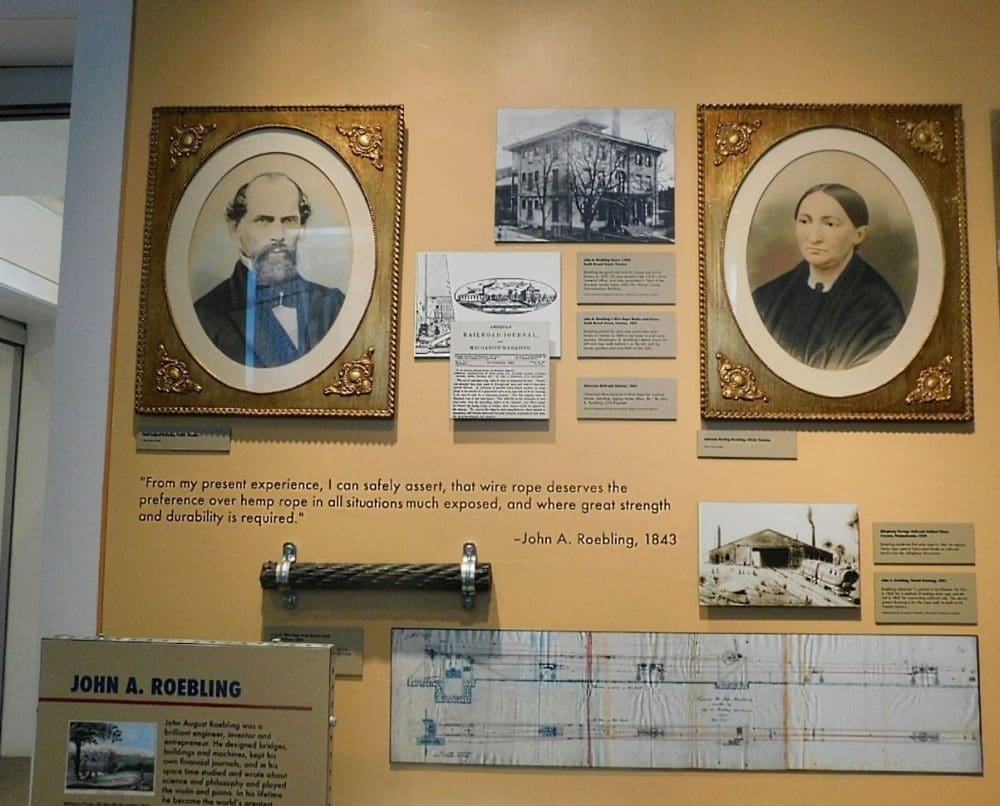
Walk Through History
Lynne Calamia, the Executive Director of Roebling Museum since 2020, may also be another reason that this museum is special. Calamia was hired in February of 2020, just before the museum was closed down for the pandemic. This afforded her the unique opportunity to spend her first year doing a deep dive into research and planning. Her PhD in Historic Preservation and Labor History qualified her to delve into the background information she inherited and to do some digging on her own. When the museum reopened to the public, Calamia introduced the Walking Tours through the company town of Roebling. These approximately one-hour tours offer an opportunity to get closer to the workers’ homes, see the exterior—still perfectly intact—of the grocery store and pharmacy. The tours are informative and they really bring the people who inhabited these homes during the early 1900’s to life. A visit to Roebling Museum is not a boring walk-through history—it truly is an immersive experience.
It Takes a Village
John A. Roebling is best known as the designer of the Brooklyn Bridge. Some of his other notable bridges include; Golden Gate Bridge, Niagara Falls Bridge and Roebling Suspension Bridge, which goes from Kentucky to Ohio and was the prototype for the Brooklyn Bridge. When the need to purchase steel from competitors caused his prices to increase, Roebling decided to build his own steel mill on the banks of the Delaware River and, in 1904, he opened the Kinkora Works just 12 short miles from where the Roebling family lived and operated other businesses in Trenton. In 1905, John’s son, Charles G. Roebling set about constructing the company town of Roebling to bring in his own labor force composed primarily, 75 percent to be exact, of eastern European immigrants.
The Miracle of Wire Rope
John Roebling’s key invention—the reason everyone should know his name—is so common now that it’s hard to believe what a revolution and technological boom it set in motion. Roebling’s major innovation was twisted wire rope. Prior to this discovery, hemp ropes were commonly used in construction and industry. It was these thick cables that were used to support the Brooklyn Bridge. Wire cables don’t sound so important, until you start extrapolating. In the late 1800’s, John’s son Ferdinand made a connection with Elisha Otis. The Otis Elevator Company introduced the first passenger safe elevators in the 1860’s. Prior to the creation of elevators, buildings were not constructed over 5 stories high. Once elevators became commonplace, skyscrapers became possible. Roebling cable was used in the Empire State Building elevators. Wire rope has many practical applications we don’t even consider such as ski lifts, airplanes, telecommunications, heavy mining operations—all of these industries incorporate some form of wire rope. Roebling’s invention was part of the key that led to a technological explosion.
It’s About the People
Roebling Museum does an excellent job of telling the story of this invention and of all the by-products of this discovery. However, what really attracts one to the museum is the living history of the workers that populated the mill and the still structurally intact town. The captivating part is in the stories of the culturally diverse communities that have inhabited this neighborhood for over 100 years—and still do. If you are a fan of Ancestry.com, this may just be your kind of place.
The magic of Roebling Museum lies within the stories and the people who populated this factory town. The eastern European immigrants that Roebling attracted to this area were primarily Hungarians and Romanians. They tended to be housed in neighborhood enclaves and were a tight-knit community. Workers had to be 16 or older and the rents charged for their homes were based on family income. The size and location of the homes indicated the hierarchy of the plant—with skilled workers living further from the dirty, noisy mill and the largest, most lavish homes lined Riverside Avenue. The boarding house still exists here. Community, social and civic organizations thrived within all of the varied ethnic groups.
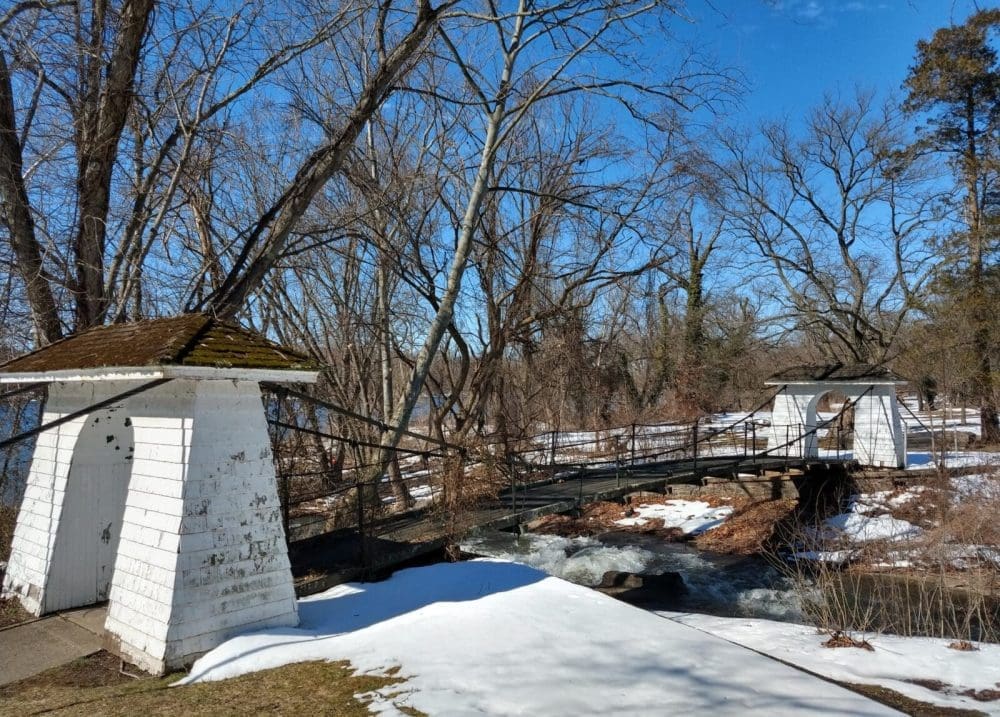
Documenting Women
Women were important members of society in Roebling. They were not just housewives and mothers. Many women worked in the wire factory—the New Jersey Cloth Company Screen Division. Here, the women wove screens for industrial and other wire mesh products. Women were an important part of the workforce here all the time – but especially essential during war time.
Not surprisingly, historical records of women’s lives are harder to come by. In order to take a deeper dive into daily life in Roebling, the museum has been lucky enough to uncover an intact set of diaries from a Roebling resident starting in 1912. A woman who lived in Roebling from 1912-1978 and meticulously documented her daily experiences every day in her diary. The Diary Project has written a grant and is actively securing funding to begin with reading, preserving and documenting the everyday experiences of life in the town of Roebling.
Bringing the Past to Life
In addition to the Walking Tours given at the museum, there are several special events that take place during the year. The Murder and Mayhem Tour and the Graveyard Tour are just two examples of ways the museum and volunteers have found to enliven history and immerse the visitor in a true-life experience. The History House Project is the museums’ biggest undertaking to date. They purchased the row home at 101 Second Avenue, across from the museum in the Hungarian neighborhood. It is being renovated and retrofitted so that when it opens in 2028, a visitor will get the experience of walking back in time—seeing what it would have been like to live in Roebling as an immigrant steelworker. What did the kitchen look like? Did they have Pittsburgh toilets in the basement? I suspect a Slinky toy or two may even be in the playroom. Yes, Slinky toys were yet another by-product of Roebling’s innovations!
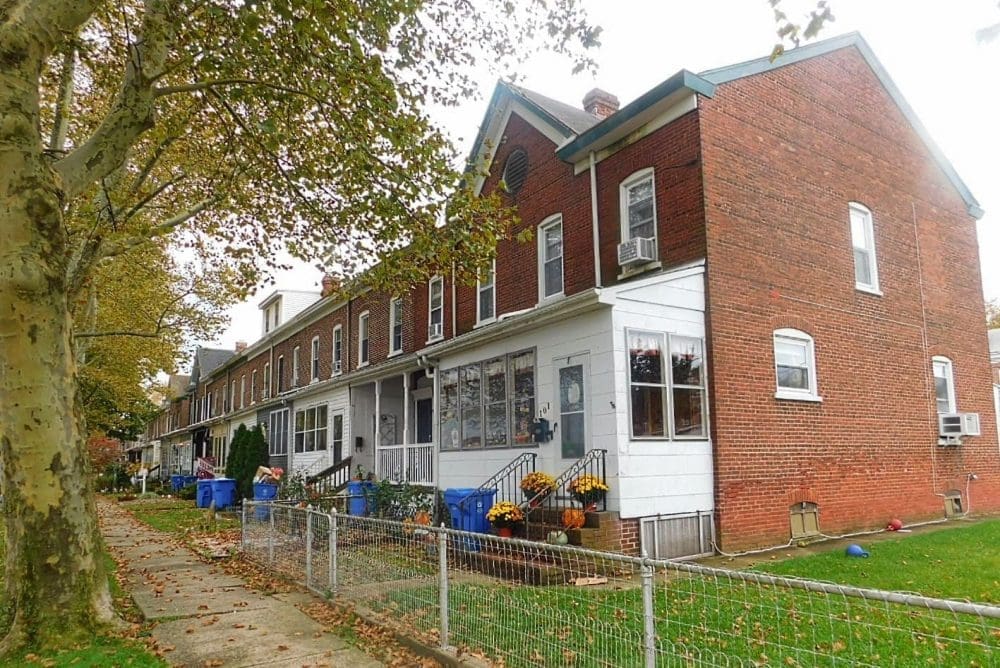
On the Trail of Roebling
There are some interesting Roebling artifacts scattered about Mercer County beyond the boundaries of the museum if the intrepid explorer is up to it. The Riverview Cemetery, along the banks of the Delaware in Trenton, is the final resting place of John, Charles, and Washington. Charles’ stone notes that his son, Washington II was lost on the Titanic. Also along the banks of the Delaware is the Shaky Bridge. Built by John A. Roebling in the early 1900’s as a prototype for the Niagara Falls Bridge. It now sits along Route 29—a destination for followers of Atlas Obscura and other history buffs. All three of John’ sons built mansions in Trenton, but today only Ferdinand’s remains are at 222 West State Street in Trenton. This is now the home of the New Jersey League of Municipalities.
Telling Tales
Roebling Museum tells the story of the company town built by the sons of John A., Charles, Washington and Ferdinand. They became the leading producers of wire rope, among many other significant contributions. In 1953, the Roebling family sold the company and it became Colorado Fuel and Iron, functioning from 1953-1974. These are the facts and they are interesting, but what brings it all to life are the stories.
Here’s one such story, and this is the one that led me to this museum: John died before the Brooklyn Bridge was constructed. Washington became Chief Engineer. When Washington became too ill from “caisson’s disease,” (now commonly known as the bends to divers) his wife actually became the first female field engineer. Emily Warren Roebling is credited as “surrogate Chief Engineer” on the Brooklyn Bridge project. Considering the bridge was completed and opened in 1883, this was a remarkable feat for a woman of her time, and it is a story that, in my opinion, deserves to be more commonly known.
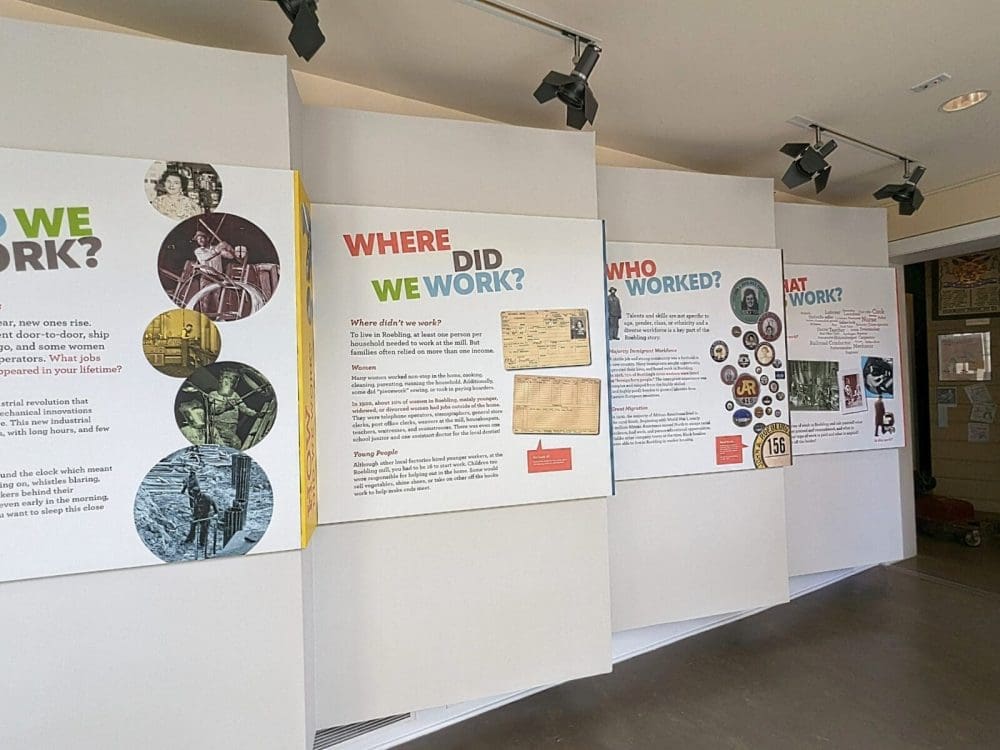
Don’t Know Your Past Can’t Know Your Future
The town of Roebling has over 700 homes. Each home contains multiple people and multiple stories. Roebling Museum is engaged in capturing, preserving and re-telling these stories. America is a nation of immigrants and like the workers who came to Roebling factories, many of our ancestors came to America with hopes and dreams and aspirations for the future. When you visit this museum and you hear the voices and you see the homes and you walk the streets it’s hard not to think about your own grandparents and ancestors coming here and learning new languages and finding their way in a foreign new world. Visiting Roebling Museum is really special—not just because of what you might see or hear—but because of what it may lead you to imagine and maybe even discover about your own history.
Sue graduated from Rutgers University with a B.A. in English back when you could still get a degree for reading great literature. She spent nearly 40 years working in the Sales & Marketing field with companies ranging from non-profits to small businesses to Fortune 100 Corporations. Most recently retired after nearly 20 years with S & P Global, she is now free to pursue her true passions for hiking, writing and photography. Sue was born and raised in New York State. As a New Jersey transplant, her passion for the special blend of culture and nature that is uniquely Jersey is what Sue loves to share with the world. She has one grown son that she is insanely proud of. Her husband of many decades is an amazing partner both in life and hiking. When not out exploring, Sue is most likely at home reading a novel with her dog.
- Sue Fajgierhttps://thedigestonline.com/author/sfajgier/
- Sue Fajgierhttps://thedigestonline.com/author/sfajgier/
- Sue Fajgierhttps://thedigestonline.com/author/sfajgier/
- Sue Fajgierhttps://thedigestonline.com/author/sfajgier/


